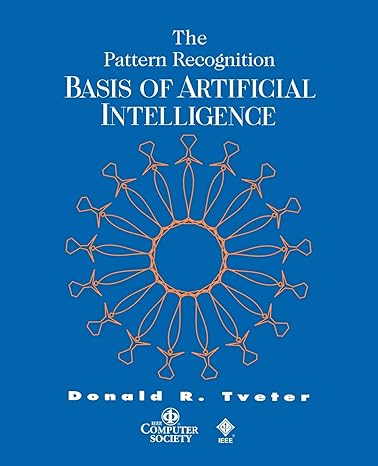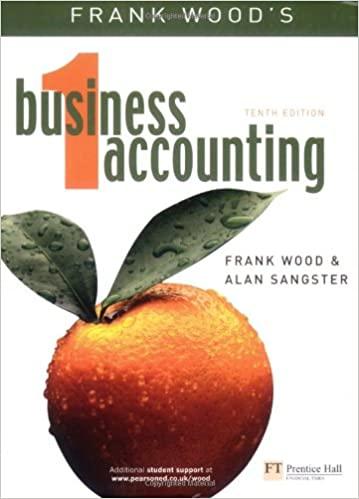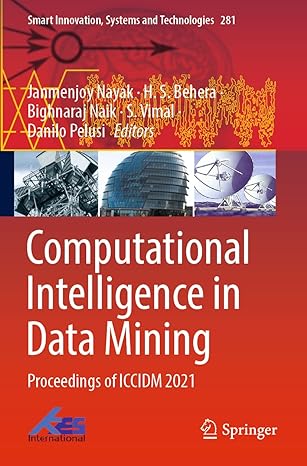Go back


The Pattern Recognition Basis Of Artificial Intelligence(1st Edition)
Authors:
Donald Tveter

Cover Type:Hardcover
Condition:Used
In Stock
Include with your book
Free shipping: April 16, 2024Popular items with books
Access to 3 Million+ solutions
Free ✝
Ask 10 Questions from expert
200,000+ Expert answers
✝ 7 days-trial
Total Price:
$0
List Price: $19.45
Savings: $19.45(100%)
Book details
ISBN: 0818677961, 978-0818677960
Book publisher: Wiley-IEEE Press
Get your hands on the best-selling book The Pattern Recognition Basis Of Artificial Intelligence 1st Edition for free. Feed your curiosity and let your imagination soar with the best stories coming out to you without hefty price tags. Browse SolutionInn to discover a treasure trove of fiction and non-fiction books where every page leads the reader to an undiscovered world. Start your literary adventure right away and also enjoy free shipping of these complimentary books to your door.
The Pattern Recognition Basis Of Artificial Intelligence 1st Edition Summary: This book takes the viewpoint that plain symbol processing techniques have little hope of reproducing the depth and breadth of capabilities found in human beings. The book introduces new foundational principles to AI: connectionist/neural networking methods, case based and memory based methods and picture processing. The book looks at methods of AI as different ways of doing pattern recognition. One way to do pattern recognition is to compare a problem to stored cases. At the other end of the spectrum, Classical Symbol Processing AI compresses cases down to a small set of rules and then works only with this condensed knowledge. In between these two extremes are neural networks, especially backprop type networks. As much as possible the book compares these three basic methods using actual AI programs. The structure of the book starts at the bottom of human abilities with vision and other simple pattern recognition abilities and moves on to the higher levels of problem solving and game playing and finally to the level of natural language and understanding of the world. At the higher levels more complex computer architectures are needed that include methods for structuring thoughts. The book is organized in a manner in which the reader will get an intuitive feeling for the principles of AI. Throughout the book applications of basic principles are demonstrated by examining some classic AI programs in detail. The book can serve as a text for juniors, seniors and first year graduate students in Computer Science or Psychology and includes sample problems and data for exercises and a list of frequently asked questions.
Customers also bought these books
Frequently Bought Together
Top Reviews for Books
Bryant Kim
( 4 )
"Delivery was considerably fast, and the book I received was in a good condition."










